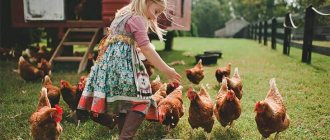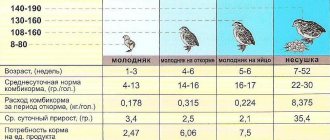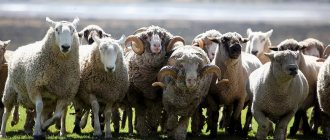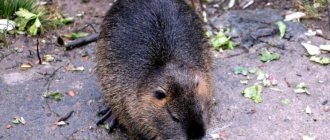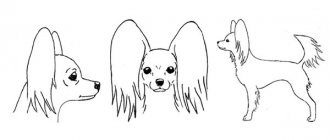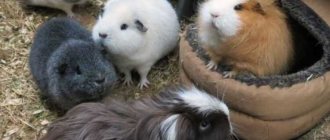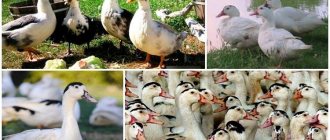Good afternoon, experienced and novice poultry farmers! Today we will talk about raising ducklings at home for novice poultry farmers. Practical aspects of raising young ducks, taking into account their age and direction of productivity.
How to start a small poultry farm project in a private household plot, specializing in duck breeding? You can buy an incubator, then spend money on eggs and worry about incubating them.
For a beginner in poultry farming, this path to achieving the goal is somewhat complicated. It is much easier to acquire viable young animals with a known origin! And later develop your own poultry farm as a business.
Nutrition from birth
Many people are interested in: what should ducklings be cared for in the first days? It is important to choose a suitable menu for young birds. After all, multiple and proper nutrition can affect the health and speed of growth of chicks.
- In the first days of birth, it is recommended to feed the ducklings once every 2 hours.
- The first portion of food should be given soon after the birds dry off.
- Food for newly hatched ducklings should contain a boiled and finely chopped egg.
- On day 2, add lean curd to the egg.
- And after 4-5 days, you need to introduce freshly cut, chopped greens into the menu.
It will be great to add aquatic plants to the diet, containing all the necessary ingredients required for the growth of ducks.
The nuances of raising young animals for breeding
Raising ducklings at home for breeding purposes. Ducklings fattened for meat production are kept up to a maximum of 55 days of age.
The selection of the best breeding material is carried out in stages. Among birds that have reached 55, 150 and 180 days of age. Young animals that are stunted in growth, with disheveled and dirty plumage, wings that do not fit tightly to the body, pale limbs and beak are rejected.
In purebred breeding, breed characteristics are also taken into account! Including standard live weight (using the example of Peking ducks):
- 10 days – 210 g;
- 20 days – 510 g;
- 30 days – 900 g;
- 40 days – 1450 g;
- 50 days – 2250;
- 60 days – 2400 g.
150-day-old ducks and drakes are transferred to the broodstock. With a recommended weight of 3 and 3.5 kg respectively.
The age of the young animals, separated by sex, is 49 days. At this time, individuals with flight feathers of the 1st and 2nd order with an almost completely expanded fan are selected. The best productivity (growth rate) is shown by ducklings whose fifth flight feather of the first order is the longest.
At the age of 49-75 days, young animals need a constant 8-hour day, and by the time of oviposition - a 14-hour day of light.
When are young animals not separated by sex until 2 months of age? Then, in order to obtain one 180-day-old laying hen, three to four day-old females are selected.
The old-fashioned method of determining the best breeding stock. After the first selection, the ducklings are driven over a 500-meter distance. Lagging individuals are rejected and sent for fattening.
The second time the young animals are selected at 21-25 weeks of age. For example, when transferred to an adult poultry house. For every Pekin drake there should be four ducks.
Feeding hatched ducks
Let's consider what is the care and feeding of day-old ducklings?
Care steps will be as follows:
- After the babies hatch from the eggs, they are given a warm heating pad to dry them out. The ducks are placed in a cardboard box with a base with a warm heating pad on the bottom. Youngsters' belly buttons tighten well on a heated object.
- In the initial 24 hours, the youngsters rest and accumulate strength; during the first day they do not yet need food, because they still have a supply of useful substances in their body.
- On the first day, babies should install a drinking bowl with the addition of boiled water so that they get used to drinking water. For training, you can tilt the birds' heads towards the drinking bowl so that they get used to drinking water from it. It is possible to give them something to drink using a pipette.
- It is worth making sure that the kids do not get their paws into the water, because of this they will get wet, and vegetation threatens such young ducks with disaster. You can build a drinking bowl from a jar lid and an inverted glass of water on it.
- Food for newly hatched ducklings will be millet cereal and boiled and finely chopped eggs - from chickens and ducks
Important to consider! The boiled egg should be cut very finely, because when the duckling swallows too large a piece, it can choke itself on it.
To teach ducklings to eat food, pour millet into your hand and roll it over, moving your palm towards the birds’ beaks; when they see the moving grains, they will begin to peck them.
It is worth letting the ducks understand what the food is, having tasted it, they will then themselves begin to look for the grains and absorb them. At this age, food is supposed to continue to be in boxes.
Drinking bowl hand made
Special containers for water are available in zoological and agricultural stores. But if you want to save money on your purchase, build a drinking bowl yourself. A plastic plumbing pipe is suitable as a base.
Small holes are cut out horizontally in the form of rectangles. One end of the future drinking bowl is closed with a plug. The other end is equipped with a plastic elbow, which is attached at a right angle. All that remains is to secure the drinker by placing it with the holes facing up. Use fasteners or legs as holders.
You can find other options for homemade drinking bowls in the article “How to make a drinking bowl for ducklings with your own hands.”
Caring for seven-day-old ducklings
What care do week-old ducklings need? In the first week of life, babies eat food intensively, and the basis of their diet will be feed. It is possible to make such food for ducks on your own, using bran for this.
Seven-day-old ducklings are kept in a brooder. To prepare the feed, corn and wheat grains are finely ground on the machine, mixed and moistened and served to the ducklings.
Take into account! The soaked mixture will soon sour and spoil, so it is worth mixing only the amount of mixture that the birds can absorb at a time.
It is important to feed ducks at least 6 times a day. You should not miss the warning of stomach diseases; here, 2 times a week, a tiny amount of potassium permanganate is added to the water so that the solution has a slightly pinkish tint.
Seven-day-old ducks can be grazed on grass; it is recommended to install a fence on young forbs. If this cannot be done, then it is possible to pull out the grass and put it in for the young ducks to eat. For better digestion, ducks need a box with loose chalk, crushed egg shells and small gravel.
Forbidden foods
There is a category of products that are harmful to the health of adult and young poultry. After consuming them, ducks suffer from digestive disorders, as well as moderate and severe poisoning. This entails illness and mass mortality.
Here's what you shouldn't feed ducklings:
- spoiled products;
- poisonous herbs: henbane, celandine, poisonous herbs;
- thermally untreated nettle;
- rye up to 2-3 months old;
- black bread;
- tomato tops;
- green potato peelings;
- milk.
When adding milk to porridge or pouring it into a drinking bowl, remember that this is a perishable product - after just an hour and a half it becomes unfit for consumption.
Food for ducklings from 10 days
7-10 days after birth, the care of small ducklings includes mash. Potatoes and root vegetables are introduced into them.
- During the initial weeks of ducks’ existence, it is recommended to feed them 2-3 times a day.
- Every time the feeder and drinker need to be thoroughly washed. It is important here to ensure that the young ducks do not overeat.
- Grown ducks need to be fed 2-3 times a day. In addition to potatoes, green mass, grains, it is worth buying prepared food for all breeds.
- They will be able to provide balanced nutrition. After a month of life for ducks, it is important to help them gain weight as quickly as possible.
Based on this, a food menu is selected, which includes:
- Corn – 45%;
- Cake - 17%;
- Wheat – 13%;
- Barley – 8%;
- Yeast for feed – 5%;
- Fishmeal – 4%;
- Meat and bone meal and feed fat – 1.5%.
It is recommended to give ducks at this age the opportunity to graze in the meadow, nibbling green grass.
If there is a body of water nearby
Some breeds of ducklings can swim as early as one month of age. The owner of the livestock should monitor this important period in the life of the bird. Duckweed and other types of algae are eaten by the livestock, which should also be recorded by the farmer. During this period, the amount of food should be reduced and the coastal area should be equipped with a special enclosure. Access to water must be unlimited.
All food products remain unchanged, but the answer to the question of how much to give is different - the mass decreases. The diet is dominated by dry mixtures, which include:
- 9 g corn;
- 49 g wheat;
- 17 g barley;
- 7 g sunflower meal;
- 4 g herbal flour;
- 1 g chalk and shells.
Instructions for caring for muskies
Let's look at some rules for caring for muscovy ducklings. Breeds of musky birds were brought from the south, so in the barn where they are located, it is necessary for grown individuals to maintain the temperature at +15 degrees, and for babies it should be higher.
- The floor in the barn should be covered with sawdust, hay or straw. To effectively breed such a duck, it is important to comply with the necessary conditions for its breeding.
- To strengthen the immunity of little jocks, it is recommended to add different foods rich in vitamins and minerals.
- When keeping ducklings, the light in the enclosure should be tripled carefully. Muscovy ducks and their ducklings are sensitive to light.
It will be good if the decor in the room is arranged in an orange-red palette.
Advantages of duck business
There are a number of advantages to the duck business. In many countries, ducks are raised along with chickens for meat and eggs. You can easily organize your own duck farm, since the costs of its construction will be minimal, because ducks are easy to care for and are not afraid of cold weather. You can also combine breeding ducks with other poultry; this bird gets along well in the backyard with other waterfowl, for example, geese, or with the same chickens, turkeys and other avian species. Some of the benefits of building your farm around ducks are outlined below:
- Ducks do not need the construction of expensive farm complexes, as a result of which the cost of constructing housing for this bird is relatively low when compared with turkey farms, for example. You can confidently build low-cost housing for ducks to start your own commercial business.
- Ducks are quite hardy birds with strong immunity and excellent acclimatization abilities. They feel great in almost any conditions acceptable for ducks.
- Ducks lay eggs frequently, so you can enjoy fresh eggs every day. You can calmly go about your business or devote time to caring for other animals on your farm, while the ducks swim peacefully or walk on the paddock; this is understandable due to the calm and unpretentious nature of the bird.
- To breed ducks, you do not need to build huge poultry houses, since one square meter in the room will be enough for three ducks.
- Ducks have a short period of incubation of eggs, and ducklings grow quickly, the main thing is to provide them with optimal living conditions, without temperature changes and high humidity. And in cold weather, young livestock, before fledging, must be kept in heated rooms.
- Ducks are highly resistant to various avian diseases.
- As already mentioned, the duck is not demanding to care for, so the livestock of this bird feeds well on any solid grain feed: wheat, barley, crushed corn, boiled and steamed cereals, their diet can be diversified by other low-cost grains, and are also useful those leftovers from cooking your meals, such as parboiled vegetables, root vegetables, and herbs. If your ducks have access to a body of water, then their diet will diversify on its own; the fact is that ducks have some peculiarity in the wild, to get their own food. A duck can extract insects, algae, earthworms, snails and even frogs from water, which, of course, will greatly facilitate the care of birds and reduce the cost of feeding.
- Ducks can also be used to clean your garden from certain types of insects and larvae, since ducks are not fans of greenery from garden beds, they can easily be allowed to work catching caterpillars and slugs on your site.
- Ducks differ from chickens in having low mortality and a higher life expectancy; ducks also lay eggs for a long period of time.
- Duck meat, offal, down and eggs are in great demand in the domestic and foreign markets. Thus, the commercial component of duck farming is undoubtedly profitable, and can be an excellent way for you to earn money. There are many farmers who have made a fortune in the duck business, and to this day receive profits from their successful entrepreneurial activities.
- Creating your own farm based on duck breeding can subsequently become a fairly stable source of employment in the countryside; unemployed people and young people who want to earn money on their own will be an excellent option for your farm. In this way, you will not only provide your own income, but also help in the fight against unemployment.
Breeding Indo-Jocks
Breeding ducks of this breed is not difficult and even profitable. The birds adapt very well to other conditions, their young are not prone to diseases, and ducklings are known for their vitality. The incubation time for chicks of this breed with good care and feeding lasts a little more than a month.
One of the owner’s main priorities is proper care and proper nutrition; this will affect how many individuals he will have.
Mother ducks do the rest of the upbringing of their offspring themselves.
- When all maintenance requirements are followed, Indo-duckling ducks hatch strong, active and healthy, but one should not ignore the fact that the hatched ducklings are fed under duress.
- Owners with experience advise giving them finely chopped eggs and porridge. After a few days, musk duck babies can already pick up food on their own in the barn and in the meadow.
Expert advice
By adhering to the following feeding standards for ducklings, you can simplify the process of raising poultry and increase the survival rate of young animals.
The water in the drinking bowl should always be clean and fresh
- Any new foods or cereals should be introduced gradually. You cannot introduce all foods into your diet at once - this can be very harmful. So they give new ingredients one at a time and watch the reaction. If the birds do not have diarrhea, constipation or any other problems after the new food, you can continue to feed them this product.
- Any food should be fresh, just like water. Otherwise, the birds may develop diarrhea, and over time, without treatment, they will die.
- Feeding ducklings is possible only with crumbly food throughout their life. If the food is viscous, sticky or liquid, it will be difficult to eat. So this point must be strictly controlled before each serving of food.
- Feeders for mash, dry food and water should be washed 1-3 times a day. Before each new serving of food, they should at least be rinsed under a strong stream of water and doused with boiling water.
- Any purchased vitamins can be given only after they are recommended or prescribed by a veterinarian. Buying vitamins blindly, without knowing all their side effects or actions, is not worth it, it is at least dangerous.
We invite you to familiarize yourself with Feeding sheep producers: useful tips
Photo instructions for caring for ducklings
Breed Features
The birds are called mute birds for their characteristic hissing. Indian women have a memorable appearance.
Distinctive features of the breed:
- The red growth around the eyes looks like a mask. The bird received another name - musk - because of the smell of musk, supposedly emanating from a growth on the head. On female ducks this growth is less pronounced or completely smoothed out.
- Birds begin to hiss when they are older.
- Mute mutes have a wide, massive chest.
- The tail is long, the legs are short.
- The mute drake weighs about 6 kg, the female specimen weighs about 3 kg.
- The beak is small, with a rounded end. The plumage is bright and colorful, depending on the breed. Possible feathers on ducks are white, brown, black, black and white and blue.

